On Transparency and Accountability of Smart Assistants in Smart Cities
Abstract
1. Introduction
- Is GA transparent in its risk communication and implementation?
- How does the transparency of GA affect its accountability?
- How does the transparency of GA affect the privacy protection of its users?
- We performed a diagnostic analysis of GA. We assessed description-to-permissions fidelity and functions-to-API-usage fidelity in GA and compared its discovered traits with those of four leading smart assistants. Our research discovered that GA has unusual permission requirements and sensitive API usage, and its risk communication to potential users and underlying implementation are not transparent, which can affect its potential users and experts in a smart city.
- We demonstrate that the lack of transparency in GA’s implementation makes its risk assessment and validation difficult for experts. It fails many state-of-the-art risk evaluation and malware detection methods and poses threats to check-and-balance and accountability mechanisms in smart cities.
- We conducted two online user studies (N = 100 and N = 210) with students of four universities in three countries (China, Italy, and Pakistan) to verify whether risk communication in GA is transparent to its potential users, and how it affects their privacy protection. The results of these studies suggest that a lack of transparency in GA’s design makes its risk assessment difficult for its potential users. This can adversely affect the privacy protection of these users and may hinder establishing private and secure personal spaces in smart cities.
2. Related Work
2.1. Transparency and Accountability in Smart Cities
2.2. Transparency and Accountability in Android Apps
2.3. Privacy and Security Issues in Smart Assistants
3. Diagnostic Analysis of GA
3.1. Method
3.1.1. Description-To-Permissions Fidelity
3.1.2. Functions-to-API-Usage Fidelity
3.1.3. Comparison with Leading Smart Assistants
3.2. Procedure
3.3. Findings
3.4. Description-To-Permissions Fidelity
3.4.1. Functions-To-API-Usage Fidelity
3.4.2. Comparison with Leading Smart Assistants
4. User Studies
4.1. User Study 1
4.1.1. Design
- Do GA permission requirements match user expectations?
4.1.2. Method
Survey Content
Survey Method
Sample Information
4.1.3. Results
Demographics
Findings
4.1.4. Analysis
4.2. User Study 2
4.2.1. Design
- Does Google transparently convey the risks of GA to its potential users?
4.2.2. Method
Survey Content
Method
Sample Information
4.2.3. Results
Demographics
4.2.4. Findings
4.2.5. Analysis
5. Results
- Is GA transparent in its risk communication and implementation?
- How does the transparency of GA affect its accountability?
- How does the transparency of GA affect the privacy protection of its users?
6. Discussion
7. Limitations
8. Conclusions
Author Contributions
Funding
Acknowledgments
Conflicts of Interest
Appendix A
Appendix A.1
- Male
- Female
- Prefer not to say
- Android
- iPhone
- Other
| Access Bluetooth Settings | Draw Over Other Apps | Read your Contacts |
| Access Precise Location | Find Accounts on the Device | Receive Data from Internet |
| Add or Remove Accounts | Find Contacts on the Device | Record Audio |
| Approximate Location | Full Network Access | Retrieve Running Apps |
| Change Network Connectivity | Interact Across Users | Run at Startup |
| Change Your Audio Settings | Modify or Delete the Contents of Your USB Storage | Send SMS Messages |
| Connect and Disconnect from Wi-Fi | Pair with Bluetooth Devices | Take Pictures and Videos |
| Control Vibration | Power Device On or Off | Use Accounts on the Device |
| Create Accounts and Set Passwords | Prevent Device from Sleeping | View Network Connections |
| Device & App History | Read Google Services | View Wi-Fi Connections |
| Directly Call Phone Numbers | Read Phone Status and Identity | |
| Disable Your Screen Lock | Read the Contents of Your USB Storage |
Appendix A.2
- Male
- Female
- Prefer not to say
- Android
- iPhone
- Other
- Authenticate Accounts
- Camera
- Read Contacts
- Read Google Services
- Read SMS
- Send SMS
- I Don’t Know
- No Response
References
- Panetta, K. Gartner Top 10 Strategic Technology Trends for 2020. Gartner.com. 2019. Available online: https://tinyurl.com/y3meckzs (accessed on 22 October 2019).
- Brauneis, R.; Goodman, E.P. Algorithmic Transparency for the Smart City. SSRN Electron. J. 2017, 103, 103–176. [Google Scholar] [CrossRef]
- Felzmann, H.; Fosch-Villaronga, E.; Lutz, C.; Tamo-Larrieux, A. Robots and Transparency: The Multiple Dimensions of Transparency in the Context of Robot Technologies. IEEE Robot. Autom. Mag. 2019, 26, 71–78. [Google Scholar] [CrossRef]
- Association for Computing Machinery US Public Policy Council (USACM). Statement on Algorithmic Transparency and Accountability; USACM Press: Washington, DC, USA, 2017; pp. 1–2. [Google Scholar]
- Adjerid, I.; Acquisti, A.; Brandimarte, L.; Loewenstein, G. Sleights of privacy. In Proceedings of the Ninth Symposium on Usable Privacy and Security—SOUPS ’13, Newcastle, UK, 24–26 July 2013; p. 1. [Google Scholar]
- Gibbs, S. Google has been tracking Android users even with location services turned off. The Guardian, 22 November 2017. [Google Scholar]
- The European Parliament and the Council of the European Union, Regulation (EU) 2016/679 (GDPR). Off. J. Eur. Union 2016, L119, 1–88.
- Kathuria, V. Greed for data and exclusionary conduct in data-driven markets. Comput. Law Secur. Rev. 2019, 35, 89–102. [Google Scholar] [CrossRef]
- Zuboff, S. Big other: Surveillance capitalism and the prospects of an information civilization. J. Inf. Technol. 2015, 30, 75–89. [Google Scholar] [CrossRef]
- Rode, J.; Johansson, C.; DiGioia, P.; Silva Filho, R.; Nies, K.; Nguyen, D.; Ren, J.; Dourish, P.; Redmiles, D. Seeing further: Extending visualization as a basis for usable security. In Proceedings of the Second Symposium on Usable Privacy and Security, Pittsburgh, PA, USA, 12–14 July 2006; pp. 145–155. [Google Scholar]
- Hern, A. Google fined Record £44m by French Data Protection Watchdog. The Guardian (International Edition), 2019. Available online: https://tinyurl.com/ybbgojxg (accessed on 23 January 2019).
- Antitrust: Commission fines Google 4.34 Billion for Illegal Practices Regarding Android Mobile Devices to Strengthen Dominance of Google’s Search Engine. Press Release, 2018. Available online: http://europa.eu/rapid/press-release_IP-18-4581_en.htm (accessed on 5 August 2018).
- Jee, C. Facebook Is Set to Pay a Multibillion-Dollar Fine to Settle a US Privacy Probe; MIT Press: Cambridge, MA, USA, 2019. [Google Scholar]
- De Oliveira, G.A.A.; Bettio, R.W.D.; Freire, A.P. Accessibility of the smart home for users with visual disabilities. In Proceedings of the 15th Brazilian Symposium on Human Factors in Computer Systems—IHC ’16, São Paulo, Brazil, 4–7 October 2016; Volume Part F1280, pp. 1–10. [Google Scholar]
- Winkler, R.; Söllner, M.; Neuweiler, M.L.; Rossini, F.C.; Leimeister, J.M. Alexa, Can You Help Us Solve This Problem? In Proceedings of the Extended Abstracts of the 2019 CHI Conference on Human Factors in Computing Systems—CHI EA ’19, Glasgow, Scotland, 4–9 May 2019; pp. 1–6. [Google Scholar]
- Bentley, F.; Luvogt, C.; Silverman, M.; Wirasinghe, R.; White, B.; Lottrjdge, D. Understanding the Long-Term Use of Smart Speaker Assistants. Proc. ACM Interact. Mob. Wearable Ubiquitous Technol. 2018, 2, 1–24. [Google Scholar] [CrossRef]
- Macfarlane, J. When apps rule the road: The proliferation of navigation apps is causing traffic chaos. It’s time to restore order. IEEE Spectr. 2019, 56, 22–27. [Google Scholar] [CrossRef]
- Udin, E. China’s Smart Assistant Will Reach 5.8 Billion Units in 2023. 2019. Available online: https://tinyurl.com/yy5z68t2 (accessed on 20 October 2019).
- Sarah, P. Report: Voice Assistants in Use to Triple to 8 Billion by 2023. 2019. Available online: https://tinyurl.com/y2takllq (accessed on 27 November 2019).
- Google Assistant. 2019. Available online: https://assistant.google.com (accessed on 27 November 2019).
- Karen, H. Inside Amazon’s Plan for Alexa to Run Your Entire Life. MIT Tchnology Review, November 2019. Available online: https://tinyurl.com/yytqpb2n (accessed on 5 November 2019).
- UNESCO and EQUALS Skills Coalition. I’d Blush If I Could: Closing Gender Divides in Digital Skills through Education; United Nations Educational, Scientific and Cultural Organization: London, UK, 2019; Available online: https://en.unesco.org/Id-blush-if-I-could (accessed on 10 June 2019).
- Politou, E.; Alepis, E.; Patsakis, C. A survey on mobile affective computing. Comput. Sci. Rev. 2017, 25, 79–100. [Google Scholar] [CrossRef]
- Chung, H.; Lee, S. Intelligent Virtual Assistant knows Your Life. arXiv 2018, arXiv:1803.00466.2018. [Google Scholar]
- Chung, H.; Iorga, M.; Voas, J.; Lee, S. ‘Alexa, Can I Trust You?’. Computer 2017, 50, 100–104. [Google Scholar] [CrossRef]
- Lau, J.; Zimmerman, B.; Schaub, F. Alexa, Are You Listening? Proc. ACM Human-Comp. Interact. 2018, 2, 1–31. [Google Scholar] [CrossRef]
- Flikkema, P.G.; Cambou, B. When things are sensors for cloud AI: Protecting privacy through data collection transparency in the age of digital assistants. In Proceedings of the 2017 Global Internet of Things Summit (GIoTS), Geneva, Switzerland, 6–9 June 2017; pp. 1–4. [Google Scholar]
- Wong, J.C. ‘A white-collar sweatshop’: Google Assistant contractors allege wage theft. The Guardian, 25 June 2019. [Google Scholar]
- Elahi, H.; Wang, G.; Peng, T.; Chen, J. AI and its Risks in Android Smartphones: A Case of Google Smart Assistant. In Proceedings of the 5th International Conference on Dependability in Sensor, Cloud, and Big Data Systems and Applications (DependSys 2019), Guangzhou, China, 12–15 November 2019; pp. 1–15. [Google Scholar]
- Gorla, A.; Tavecchia, I.; Gross, F.; Zeller, A. Checking app behavior against app descriptions. In Proceedings of the 36th International Conference on Software Engineering—ICSE 2014, Hyderabad, India, 31 May–7 June 2014; pp. 1025–1035. [Google Scholar]
- Yu, L.; Luo, X.; Qian, C.; Wang, S.; Leung, H.K.N. Enhancing the Description-to-Behavior Fidelity in Android Apps with Privacy Policy. IEEE Trans. Softw. Eng. 2018, 44, 834–854. [Google Scholar] [CrossRef]
- Slovic, P. Perception of risk. Science 1987, 236, 280–285. [Google Scholar] [CrossRef] [PubMed]
- Cohen, S.; Money, W. Establishing Smart City Technical Standards and Guidance. In Proceedings of the 26th International Conference on World Wide Web Companion—WWW ’17 Companion, Perth, Australia, 3–7 April 2017; pp. 1161–1166. [Google Scholar]
- Ferretti, L.; Longo, F.; Colajanni, M.; Merlino, G.; Tapas, N. Authorization Transparency for Accountable Access to IoT Services. In Proceedings of the 2019 IEEE International Congress on Internet of Things (ICIOT), San Diego, CA, USA, 5–30 June 2019; pp. 91–99. [Google Scholar]
- Steijn, W.M.P.; Niezen, M.G.H. The Value of Accountability in the Cloud: Individual Willingness to Pay for Transparency. IEEE Technol. Soc. Mag. 2015, 34, 74–82. [Google Scholar] [CrossRef]
- Zouave, E.T.; Marquenie, T. An Inconvenient Truth: Algorithmic Transparency & Accountability in Criminal Intelligence Profiling. In Proceedings of the 2017 European Intelligence and Security Informatics Conference (EISIC), Athens, Greece, 11–13 September 2017; pp. 17–23. [Google Scholar]
- Permissions Overview. Android Developer Documentation. Available online: https://bit.ly/2HcAcye (accessed on 25 June 2019).
- Zhou, Y.; Piekarska, M.; Raake, A.; Xu, T.; Wu, X.; Dong, B. Control yourself: On user control of privacy settings using personalization and privacy panel on smartphones. Procedia Comput. Sci. 2017, 109, 100–107. [Google Scholar] [CrossRef]
- Bal, G.; Rannenberg, K.; Hong, J.I. Styx: Privacy risk communication for the Android smartphone platform based on apps’ data-access behavior patterns. Comput. Secur. 2015, 53, 187–202. [Google Scholar] [CrossRef]
- Kim, K.J.; Shin, D.H.; Yoon, H. Information tailoring and framing in wearable health communication. Inf. Process. Manag. 2017, 53, 351–358. [Google Scholar] [CrossRef]
- Bao, L.; Lo, D.; Xia, X.; Li, S. What permissions should this android app request? In Proceedings of the 2016 International Conference on Software Analysis, Testing and Evolution, SATE 2016, Kunming, China, 3–4 November 2016; pp. 36–41. [Google Scholar]
- Sun, L.; Li, Z.; Yan, Q.; Srisa-an, W.; Pan, Y. SigPID: Significant permission identification for android malware detection. In Proceedings of the 2016 11th International Conference on Malicious and Unwanted Software (MALWARE), Fajardo, Puerto Rico, 18–22 October 2016; pp. 59–66. [Google Scholar]
- Dao, T.A.; Singh, I.; Madhyastha, H.V.; Krishnamurthy, S.V.; Cao, G.; Mohapatra, P. TIDE: A user-centric tool for identifying energy hungry applications on smartphones. IEEE/ACM Trans. Netw. 2017, 25, 1459–1474. [Google Scholar] [CrossRef]
- Dini, G.; Martinelli, F.; Matteucci, I.; Petrocchi, M.; Saracino, A.; Sgandurra, D. Risk analysis of Android applications: A user-centric solution. Futur. Gener. Comput. Syst. 2018, 80, 505–518. [Google Scholar] [CrossRef]
- Rashidi, B.; Fung, C.; Bertino, E. Android resource usage risk assessment using hidden Markov model and online learning. Comput. Secur. 2017, 65, 90–107. [Google Scholar] [CrossRef]
- Jing, Y.; Ahn, G.-J.; Zhao, Z.; Hu, H. RiskMon: Continuous and Automated Risk Assessment of Mobile Applications. In Proceedings of the 4th ACM Conference on Data and Application Security and Privacy, CODASPY 2014, San Antonio, TX, USA, 3–5 March 2014; pp. 99–110. [Google Scholar]
- Bhandari, S.; Jaballah, W.B.; Jain, V.; Laxmi, V.; Zemmari, A.; Gaur, M.S.; Mosbah, M.; Conti, M. Android inter-app communication threats and detection techniques. Comput. Secur. 2017, 70, 392–421. [Google Scholar] [CrossRef]
- Zanfir, G. Forgetting About Consent. Why The Focus Should Be On ‘Suitable Safeguards’ in Data Protection Law. In Reloading Data Protection; Springer: Dordrecht, The Netherlands, 2014; pp. 237–257. [Google Scholar]
- Alepis, E.; Patsakis, C. Monkey Says, Monkey Does: Security and Privacy on Voice Assistants. IEEE Access 2017, 5, 17841–17851. [Google Scholar] [CrossRef]
- Zhang, N.; Mi, X.; Feng, X.; Wang, X.; Tian, Y.; Qian, F. Understanding and Mitigating the Security Risks of Voice-Controlled Third-Party Skills on Amazon Alexa and Google Home. arXiv 2018, arXiv:1805.01525. [Google Scholar]
- Zhang, R.; Chen, X.; Lu, J.; Wen, S.; Nepal, S.; Xiang, Y. Using AI to Hack IA: A New Stealthy Spyware Against Voice Assistance Functions in Smart Phones. arXiv 2018, arXiv:1805.06187. [Google Scholar]
- Seymour, W. How loyal is your Alexa? In Proceedings of the Extended Abstracts of the 2018 CHI Conference on Human Factors in Computing Systems—CHI ’18, Montreal, QC, Canada, 21–26 April 2018; pp. 1–6. [Google Scholar]
- Porter, J. The Biggest Google Assistant Products from CES 2019. The Verge. 2019. Available online: https://tinyurl.com/ycasf9j4 (accessed on 20 April 2019).
- Amadeo, R. The Google Assistant SDK Will Let You Run the Assistant on Anything. Arstechnica.com. 2017. Available online: https://tinyurl.com/k3at2vw (accessed on 29 January 2019).
- Felt, A.P.; Chin, E.; Hanna, S.; Song, D.; Wagner, D. Android Permissions Demystified. In Proceedings of the 18th ACM Conference on Computer and Communications Security, Chicago, IL, USA, 17–21 October 2011; pp. 627–638. [Google Scholar]
- Tao, G.; Zheng, Z.; Guo, Z.; Lyu, M.R. MalPat: Mining Patterns of Malicious and Benign Android Apps via Permission-Related APIs. IEEE Trans. Reliab. 2018, 67, 355–369. [Google Scholar] [CrossRef]
- Fang, Z.; Han, W.; Li, D.; Guo, Z.; Guo, D.; Wang, X.; Qian, Z.; Chen, H. revDroid: Code Analysis of the Side Effects after Dynamic Permission Revocation of Android Apps. In Proceedings of the 11th ACM on Asia Conference on Computer and Communications Security—ASIA CCS ’16, Xi’an, China, 30 May–3 June 2016; pp. 747–758. [Google Scholar]
- Desnos, A. Androguard: Reverse Engineering, Malware and Goodware Analysis of Android Applications. 2013. Available online: https://github.com/androguard (accessed on 6 June 2018).
- Bohm, A. Theoretical Coding: Text Analysis in Grounded Theory. In A Companion to Qualitative Research; Flick, U., von Kardoff, E., Stein, I., Eds.; SAGE Publications: London, UK, 2004; pp. 270–275. [Google Scholar]
- Rovelli, P. Ninja Droid. GitHub. Available online: https://github.com/rovellipaolo/NinjaDroid (accessed on 6 December 2019).
- ProGuarg. Available online: https://tinyurl.com/y6qzlmdb (accessed on 5 March 2019).
- Article 29 Data Protection Working Party. Opinion 02/2013 on Apps on Smart Devices (wp202). Available online: https://tinyurl.com/r7kb8dx (accessed on 5 June 2019).
- Google, Publish Your App. Android Developers. 2019. Available online: https://tinyurl.com/y6krwplm (accessed on 25 November 2019).
- Chong, I.; Ge, H.; Li, N.; Proctor, R.W. Influence of privacy priming and security framing on mobile app selection. Comput. Secur. 2018, 78, 143–154. [Google Scholar] [CrossRef]
- Harris, M.A.; Brookshire, R.; Chin, A.G. Identifying factors influencing consumers’ intent to install mobile applications. Int. J. Inf. Manag. 2016, 36, 441–450. [Google Scholar] [CrossRef]
- Gu, J.; Xu, Y.; Xu, H.; Zhang, C.; Ling, H. Privacy concerns for mobile app download: An elaboration likelihood model perspective. Decis. Support Syst. 2017, 94, 19–28. [Google Scholar] [CrossRef]
- Yang, W.; Xiao, X.; Pandita, R.; Enck, W.; Xie, T. Improving mobile application security via bridging user expectations and application behaviors. In Proceedings of the 2014 Symposium and Bootcamp on the Science of Security—HotSoS ’14, Raleigh, NC, USA, 8–9 April 2014; pp. 1–2. [Google Scholar]
- Manski, C.F. Measuring Expectations. Econometrica 2014, 72, 1329–1376. [Google Scholar] [CrossRef]
- Neumann, P.G. Expectations of security and privacy. Commun. ACM 1994, 37, 138. [Google Scholar] [CrossRef]
- Xu, X.; Zhang, L.; Wan, Q. A Variation Coefficient Similarity Measure and Its Application in Emergency Group Decision-making. Syst. Eng. Procedia 2012, 5, 119–124. [Google Scholar] [CrossRef]
- Chen, K.; Wang, X.; Chen, Y.; Wang, P.; Lee, Y.; Wang, X.; Ma, B.; Wang, A.; Zhang, Y.; Zou, W. Following Devil’s Footprints: Cross-Platform Analysis of Potentially Harmful Libraries on Android and iOS. In Proceedings of the 2016 IEEE Symposium on Security and Privacy, SP 2016, San Jose, CA, USA, 23–25 May 2016; pp. 357–376. [Google Scholar]
- Li, L.; Bissyande, T.F.; Klein, J. Rebooting Research on Detecting Repackaged Android Apps: Literature Review and Benchmark. IEEE Trans. Softw. Eng. 2019, 5589. [Google Scholar] [CrossRef]
- Jaccard, P. Etude Comparative de la Distribution Florale Dans Une Portion Des Alpes et du Jura. Bull. Socit Vaudoise Sci. Nat. 1901, 35, 547–579. [Google Scholar]
- Elahi, H.; Wang, G.; Xie, D. Assessing privacy behaviors of smartphone users in the context of data over-collection problem: An exploratory study. In Proceedings of the 2017 IEEE SmartWorld, Ubiquitous Intelligence & Computing, Advanced & Trusted Computed, Scalable Computing & Communications, Cloud & Big Data Computing, Internet of People and Smart City Innovation (SmartWorld/SCALCOM/UIC/ATC/CBDCom/IOP/SCI), San Francisco, CA, USA, 4–8 August 2017; pp. 1–8. [Google Scholar]
- Peng, T.; Liu, Q.; Wang, G.; Xiang, Y.; Chen, S. Multidimensional privacy preservation in location-based services. Futur. Gener. Comput. Syst. 2019, 93, 312–326. [Google Scholar] [CrossRef]
- Zhang, S.; Wang, G.; Bhuiyan, M.Z.A.; Liu, Q. A Dual Privacy Preserving Scheme in Continuous Location-Based Services. IEEE Internet Things J. 2018, 5, 4191–4200. [Google Scholar] [CrossRef]
- Dilawar, N.; Majeed, H.; Beg, M.O.; Ejaz, N.; Muhammad, K.; Mehmood, I.; Nam, Y. Understanding citizen issues through reviews: A step towards data informed planning in Smart Cities. Appl. Sci. 2018, 8, 1589. [Google Scholar] [CrossRef]
- Pasolini, G.; Toppan, P.; Zabini, F.; Castro, C.D.; Andrisano, O. Design, Deployment and Evolution of Heterogeneous Smart Public Lighting Systems. Appl. Sci. 2019, 9, 3281. [Google Scholar] [CrossRef]
- Chang, F.C.; Chiu, C.; Chen, P.; Chiang, J.; Miao, N.; Chuang, H.; Liu, S. Children’s use of mobile devices, smartphone addiction and parental mediation in Taiwan. Comput. Hum. Behav. 2019, 93, 25–32. [Google Scholar] [CrossRef]
- Fischer-Grote, L.; Kothgassner, O.D.; Felnhofer, A. Risk factors for problematic smartphone use in children and adolescents: A review of existing literature. Neuropsychiatrie 2019. [Google Scholar] [CrossRef]
- READ_GSERVICE. 2019. Available online: https://tinyurl.com/y27dz3we (accessed on 25 June 2019).
- Horner, R.; Rimmer, C. Consent: Assessing and communicating risk. Surgery 2019, 37, 431–434. [Google Scholar] [CrossRef]
- Fan, M.; Liu, J.; Wang, W.; Li, H.; Tian, Z.; Liu, T. DAPASA: Detecting Android Piggybacked Apps Through Sensitive Subgraph Analysis. IEEE Trans. Inf. Forensics Secur. 2017, 12, 1772–1785. [Google Scholar] [CrossRef]
- Xu, Y.; Wang, G.; Ren, J.; Zhang, Y. An adaptive and configurable protection framework against android privilege escalation threats. Futur. Gener. Comput. Syst. 2019, 92, 210–224. [Google Scholar] [CrossRef]
- Li, J.; Sun, L.; Yan, Q.; Li, Z.; Srisa-an, W.; Ye, H. Significant Permission Identification for Machine- Learning-Based Android Malware Detection. IEEE Trans. Ind. Informatics 2018, 14, 3216–3225. [Google Scholar] [CrossRef]
- Collins, K. Google Collects Android Users’ Locations Even When Location Services Are Disabled. 2017. Available online: https://tinyurl.com/y93eadtp (accessed on 23 May 2018).
- Ng, A. More Than 1,000 Android Apps Harvest Data Even after you Deny Permissions. CNET, July 2019. Available online: https://tinyurl.com/y5dxluf5 (accessed on 10 July 2019).
- Varian, H.R. Beyond Big Data; Berkeley School of Information: San Francisco, CA, USA, 2013. [Google Scholar]
- Rasthofer, S.; Arzt, S.; Bodden, E. A Machine-learning Approach for Classifying and Categorizing Android Sources and Sinks. In Proceedings of the 2014 Network and Distributed System Security Symposium, San Diego, CA, USA, 23–26 February 2014; pp. 23–26. [Google Scholar]
- Fabo, B.; Kahanec, M. Can a voluntary web survey be useful beyond explorative research? Int. J. Soc. Res. Methodol. 2018, 21, 591–601. [Google Scholar] [CrossRef]
- Sweller, J.; Ayres, P.; Kalyuga, S. Intrinsic and Extraneous Cognitive Load. In Cognitive Load Theory; Springer: New York, NY, USA, 2011; pp. 57–69. [Google Scholar]
- Solove, D.J. Privacy Self-Management and the Consent Dilemma. Harvard Law Rev. 2013, 126, 1880. [Google Scholar]
- Senarath, A.R.; Arachchilage, N.A.G. Understanding user privacy expectations: A software developer’s perspective. Telemat. Inform. 2018, 35, 1845–1862. [Google Scholar] [CrossRef]
- Wang, Z.; Yu, Q. Privacy trust crisis of personal data in China in the era of Big Data: The survey and countermeasures. Comput. Law Secur. Rev. 2015, 31, 782–792. [Google Scholar] [CrossRef]
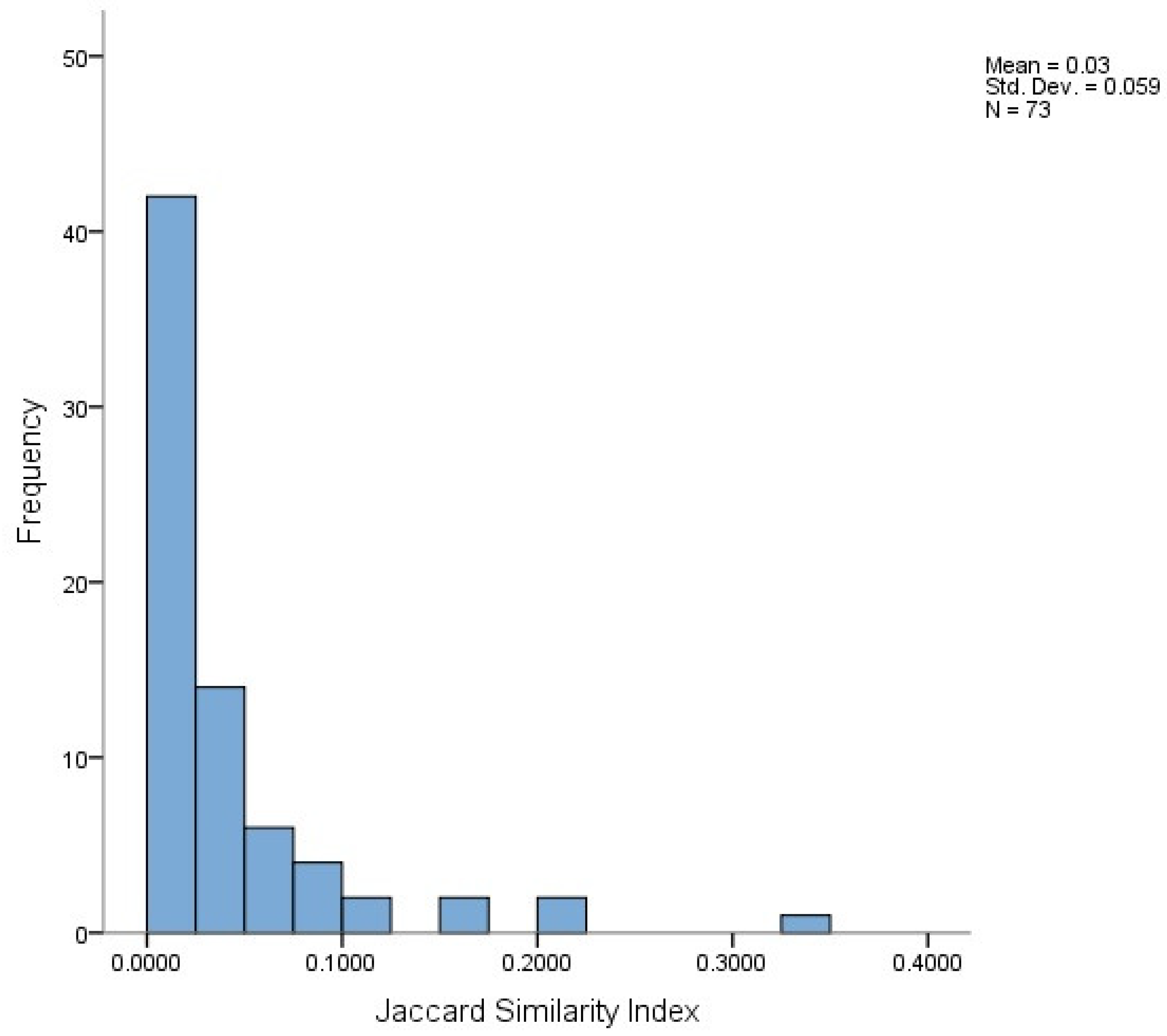
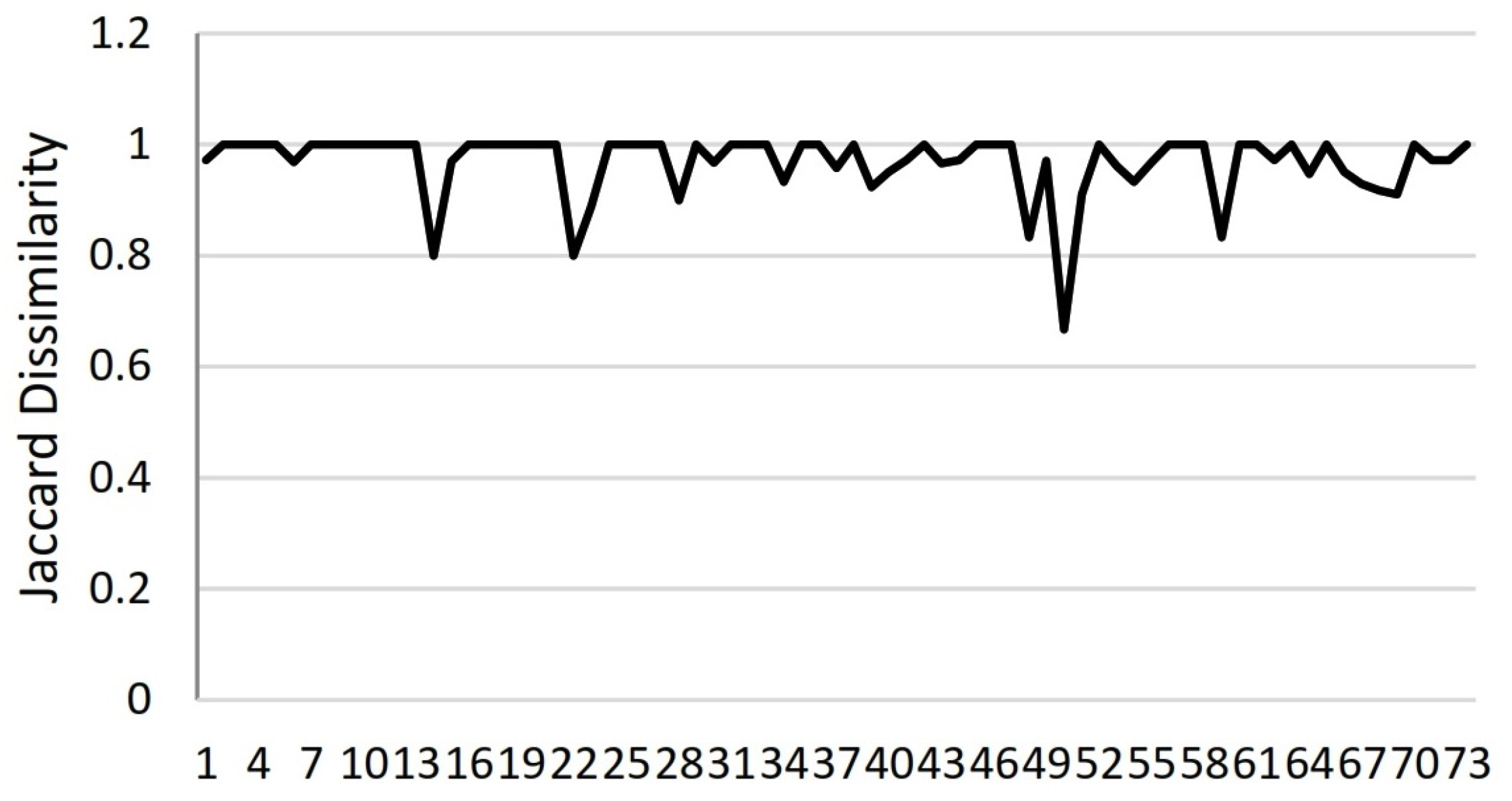
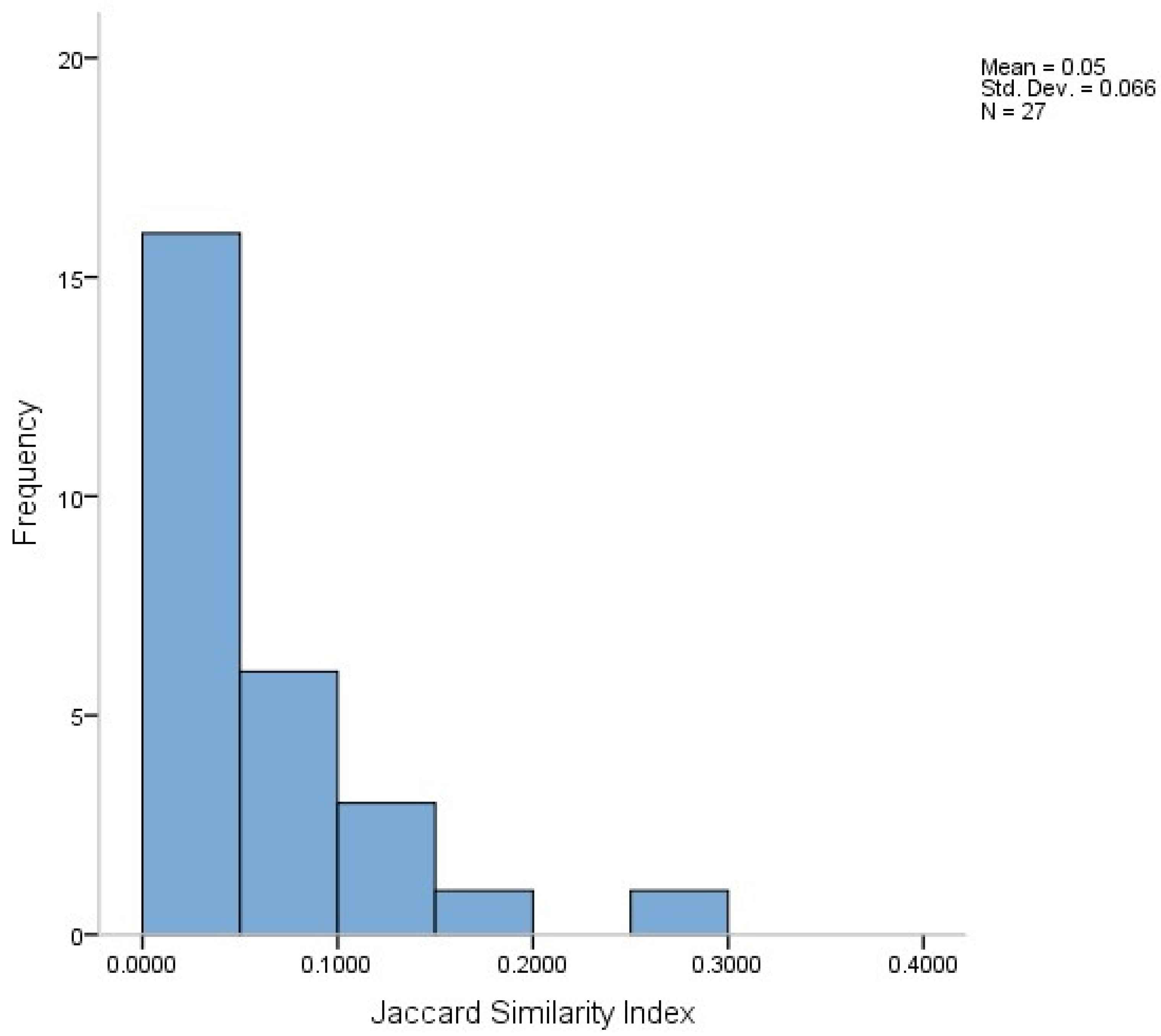
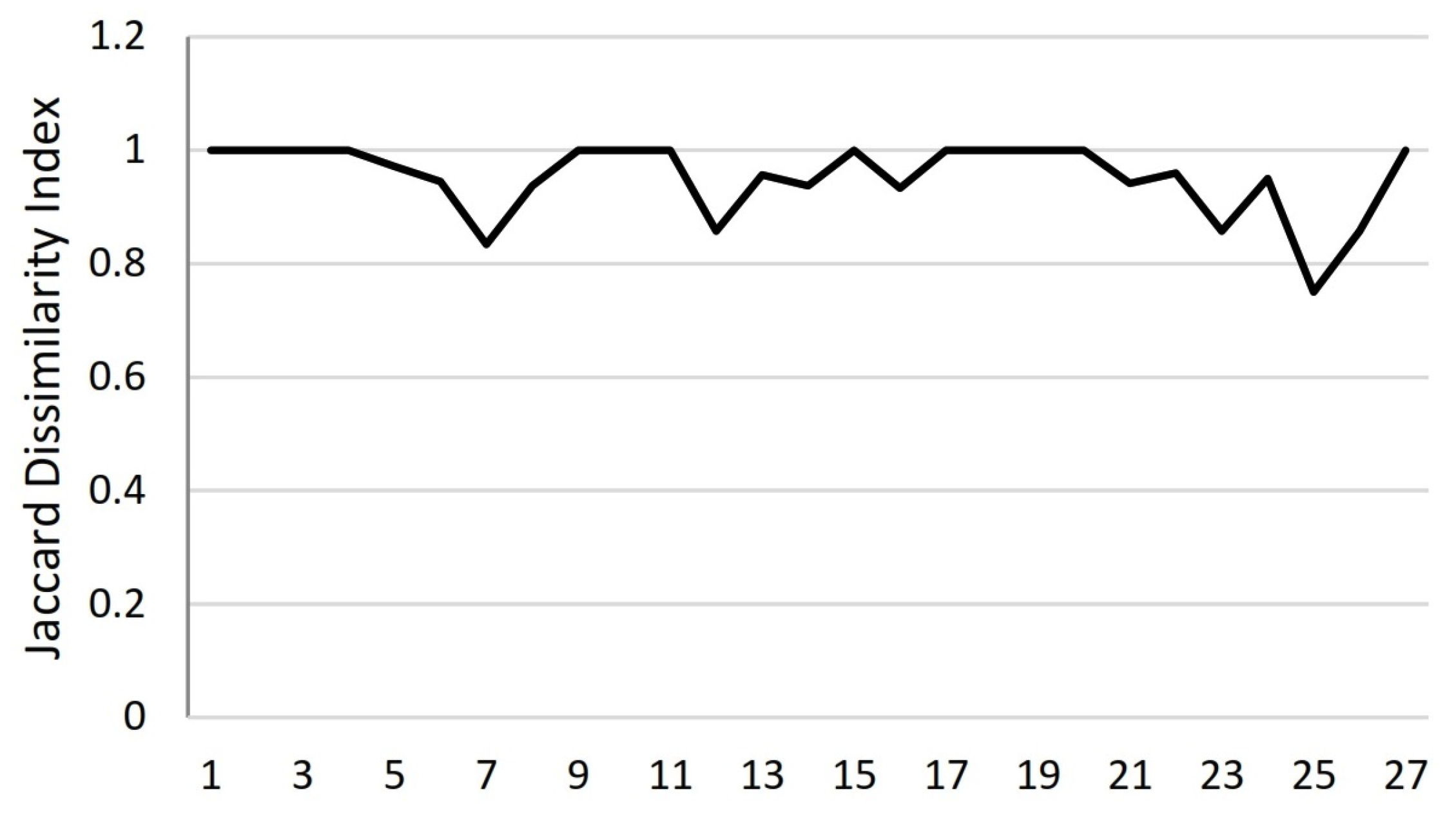
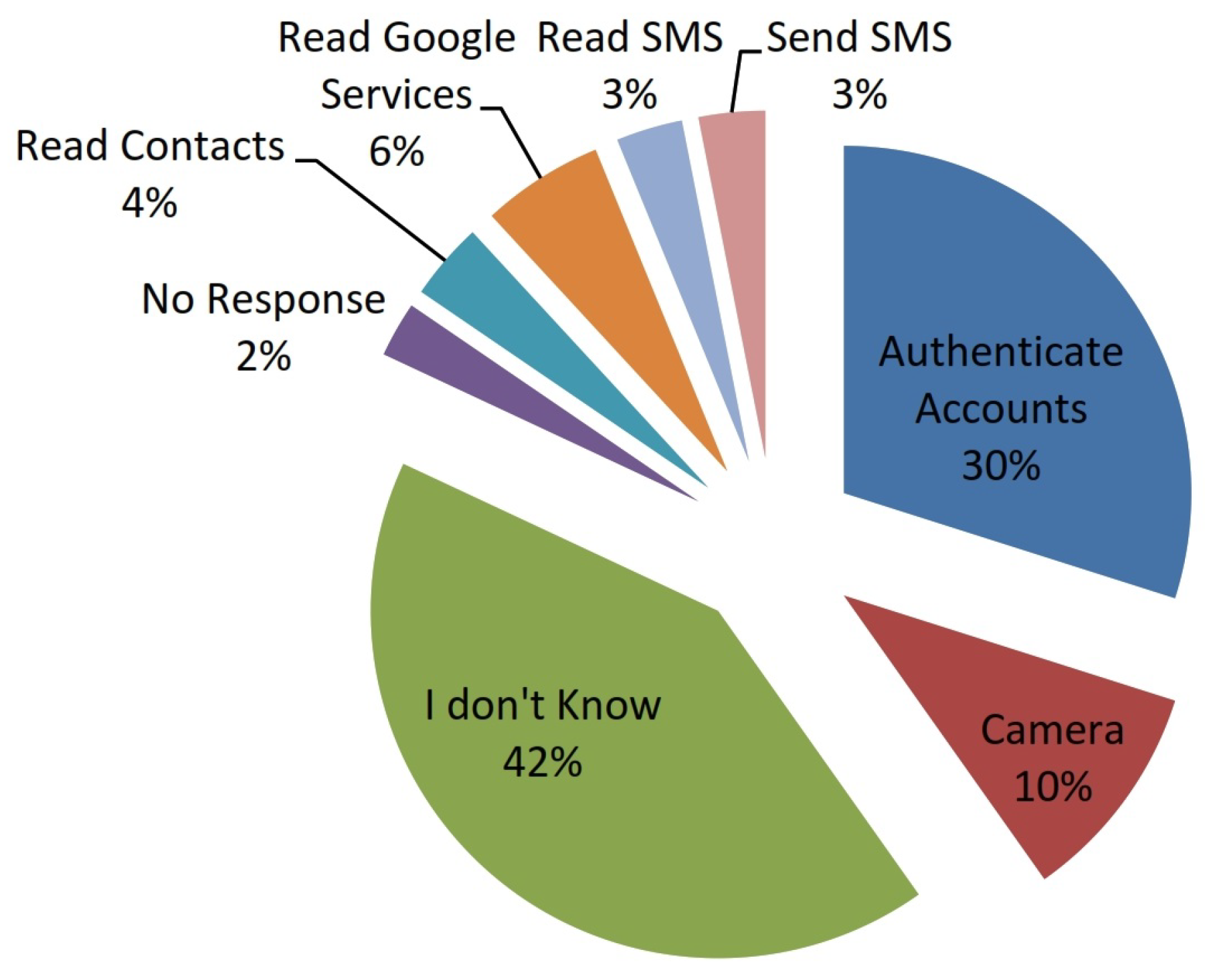

| Function | Alexa | Cortana | Dragon | GSA | Lyra |
|---|---|---|---|---|---|
| Across Devices |  |  | - |  |  |
| Listen Music |  | - | - |  |  |
| Shopping |  | - | - | - | - |
| News Updates |  | - | - | - |  |
| Voice Recognition |  |  |  |  |  |
| Personalization |  |  |  |  |  |
| Calendar Management |  |  |  |  | - |
| Calls and Messaging |  | - |  |  | - |
| Intercom |  | - | - | - | - |
| Smart Home Device Mgmt. |  | - | - |  | - |
| Online search | - |  |  |  |  |
| Reminders |  |  |  |  |  |
| Notes taking | - |  |  | - |  |
| Social Media Posts | - | - |  | - |  |
| Send emails | - | - |  |  | - |
| Event Planning | - | - | - |  | - |
| Get Directions | - | - | - |  |  |
| Play YouTube Videos | - | - | - |  |  |
| Translation | - | - | - | - |  |
| Launch Apps | - |  |  |  | - |
| Physical Activity Tracking | - | - | - |  | - |
 means the presence of the function in a given smart assistant and - shows its absence.
means the presence of the function in a given smart assistant and - shows its absence.| API | Alexa | Cortana | Dragon | GSA | Lyra |
|---|---|---|---|---|---|
| getDeviceId |  |  |  | - | - |
| getSubscriberId | - | - | - | - | - |
| getCallState |  | - | - | - | - |
| getNetworkCountry | - | - | - | - | - |
| sendTextMessage | - | - | - | - | - |
| getMessageBody | - |  | - | - | - |
| getNetworkInfo |  | - | - | - |  |
| getLastKnownLocation |  |  | - | - | - |
| getLatitude |  |  |  | - |  |
| getLongitude |  |  |  | - |  |
| getOutputStream |  |  | - | - | - |
| openStream | - | - | - | - | - |
| sendDataMessage | - | - | - | - | - |
| setPlaybackStat |  | - |  | - |  |
| setCallback |  |  |  | - |  |
| getAssets |  |  |  |  |  |
| getHost |  |  |  | - |  |
| requestSync | - |  | - | - | - |
| startSync | - | - | - | - | - |
| stopSync | - | - | - | - | - |
| loadUrl | - |  |  | - | - |
| connect |  |  |  | - |  |
| getLanguage |  |  |  | - |  |
| speak |  |  |  | - |  |
| shutdown |  |  |  | - |  |
 indicates the usage of a given API by a smart assistant, and - means the absence of its use.
indicates the usage of a given API by a smart assistant, and - means the absence of its use.| App | Normal | Dangerous | System or Signature | Total |
|---|---|---|---|---|
| Alexa | 21 | 9 | 26 | 56 |
| Cortana | 29 | 18 | 14 | 61 |
| Dragon | 20 | 18 | 6 | 44 |
| GA | 0 | 0 | 1 | 1 |
| Lyra | 10 | 16 | 2 | 28 |
| App | Dangerous Permissions |
|---|---|
| Alexa | RECORD_AUDIO, ACCESS_FINE_LOCATION, CAMERA, WRITE_EXTERNAL_STORAGE, READ_EXTERNAL_STORAGE, READ_CONTACTS, CALL_PHONE, SEND_SMS, READ_PHONE_STATE |
| Cortana | RECORD_AUDIO, ACCESS_FINE_LOCATION, ACCESS_COARSE_LOCATION, CALL_PHONE, READ_PHONE_STATE, PROCESS_OUTGOING_CALLS, READ_EXTERNAL_STORAGE, WRITE_EXTERNAL_STORAGE, CAMERA, SEND_SMS, READ_CONTACTS, WRITE_CALENDAR, READ_CALENDAR, READ_SMS, WRITE_SMS, RECEIVE_SMS, RECEIVE_MMS, ACCESS_LOCATION_EXTRA_COMMANDS |
| Dragon | RECORD_AUDIO, READ_PHONE_STATE, WRITE_EXTERNAL_STORAGE, CALL_PHONE, READ_CONTACTS, READ_SMS, SEND_SMS, WRITE_SMS, READ_CALENDAR, WRITE_CALENDAR, RITE_CONTACTS, ACCESS_FINE_LOCATION, ACCESS_COARSE_LOCATION, ACCESS_LOCATION_EXTRA_COMMANDS, RECEIVE_SMS, READ_EXTERNAL_STORAGE, READ_CALL_LOG, WRITE_CALL_LOG |
| Lyra | CALL_PHONE, ACCESS_FINE_LOCATION, ACCESS_COARSE_LOCATION, RECORD_AUDIO, READ_PHONE_STATE, READ_CONTACTS, WRITE_CONTACTS, READ_CALENDAR, WRITE_CALENDAR, SEND_SMS, RECEIVE_SMS, READ_SMS, WRITE_SMS, CAMERA, READ_EXTERNAL_STORAGE, WRITE_EXTERNAL_STORAGE |
| Choice | Female | Male |
|---|---|---|
| Authenticate Accounts | 31 | 28 |
| Camera | 10 | 12 |
| Read Contacts | 1 | 9 |
| Read Google Services | 3 | 10 |
| Read SMS | 3 | 6 |
| Send SMS | 3 | 3 |
| I Don’t Know | 46 | 31 |
| No Response | 3 | 1 |
© 2019 by the authors. Licensee MDPI, Basel, Switzerland. This article is an open access article distributed under the terms and conditions of the Creative Commons Attribution (CC BY) license (http://creativecommons.org/licenses/by/4.0/).
Share and Cite
Elahi, H.; Wang, G.; Peng, T.; Chen, J. On Transparency and Accountability of Smart Assistants in Smart Cities. Appl. Sci. 2019, 9, 5344. https://doi.org/10.3390/app9245344
Elahi H, Wang G, Peng T, Chen J. On Transparency and Accountability of Smart Assistants in Smart Cities. Applied Sciences. 2019; 9(24):5344. https://doi.org/10.3390/app9245344
Chicago/Turabian StyleElahi, Haroon, Guojun Wang, Tao Peng, and Jianer Chen. 2019. "On Transparency and Accountability of Smart Assistants in Smart Cities" Applied Sciences 9, no. 24: 5344. https://doi.org/10.3390/app9245344
APA StyleElahi, H., Wang, G., Peng, T., & Chen, J. (2019). On Transparency and Accountability of Smart Assistants in Smart Cities. Applied Sciences, 9(24), 5344. https://doi.org/10.3390/app9245344






